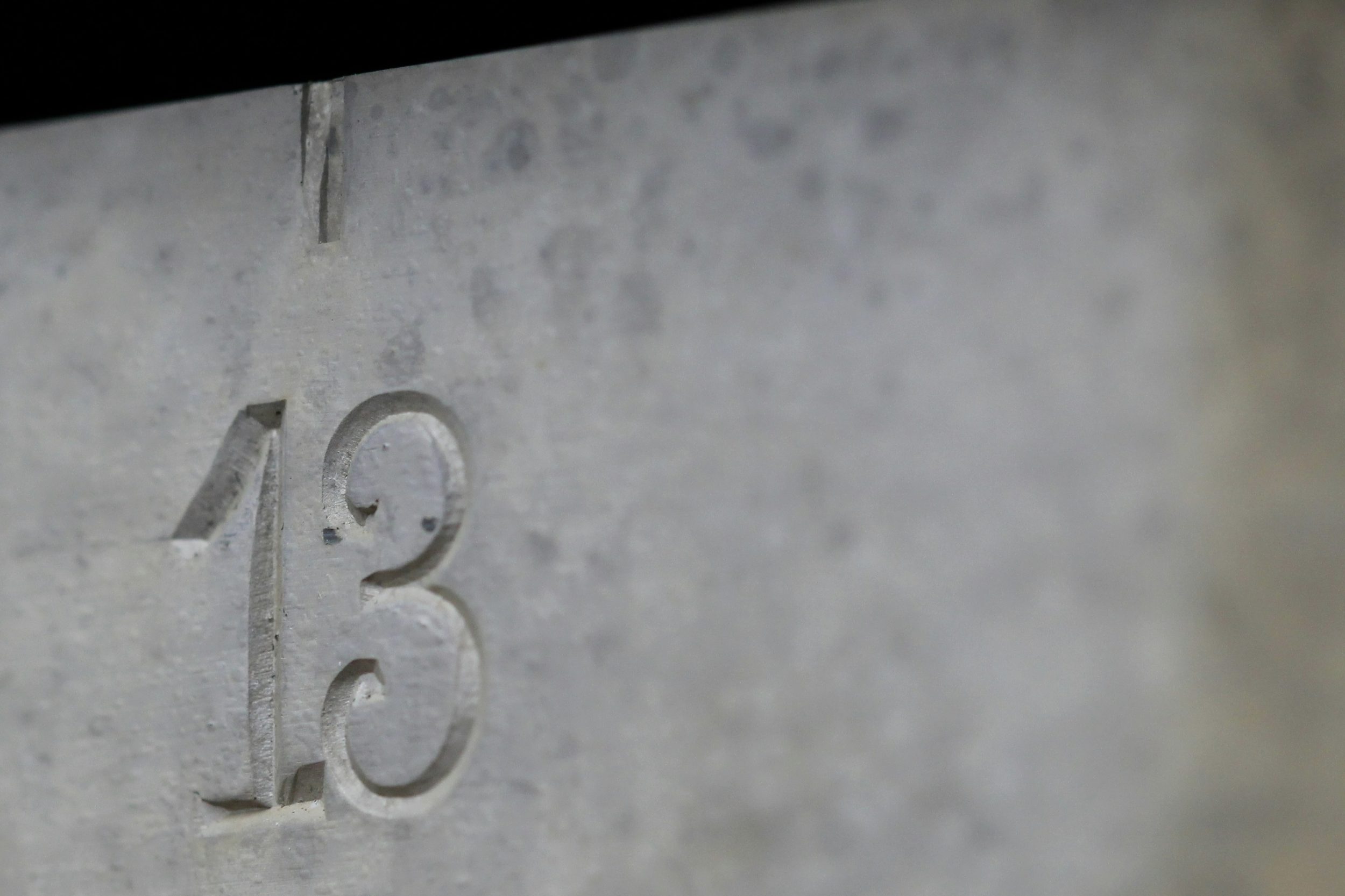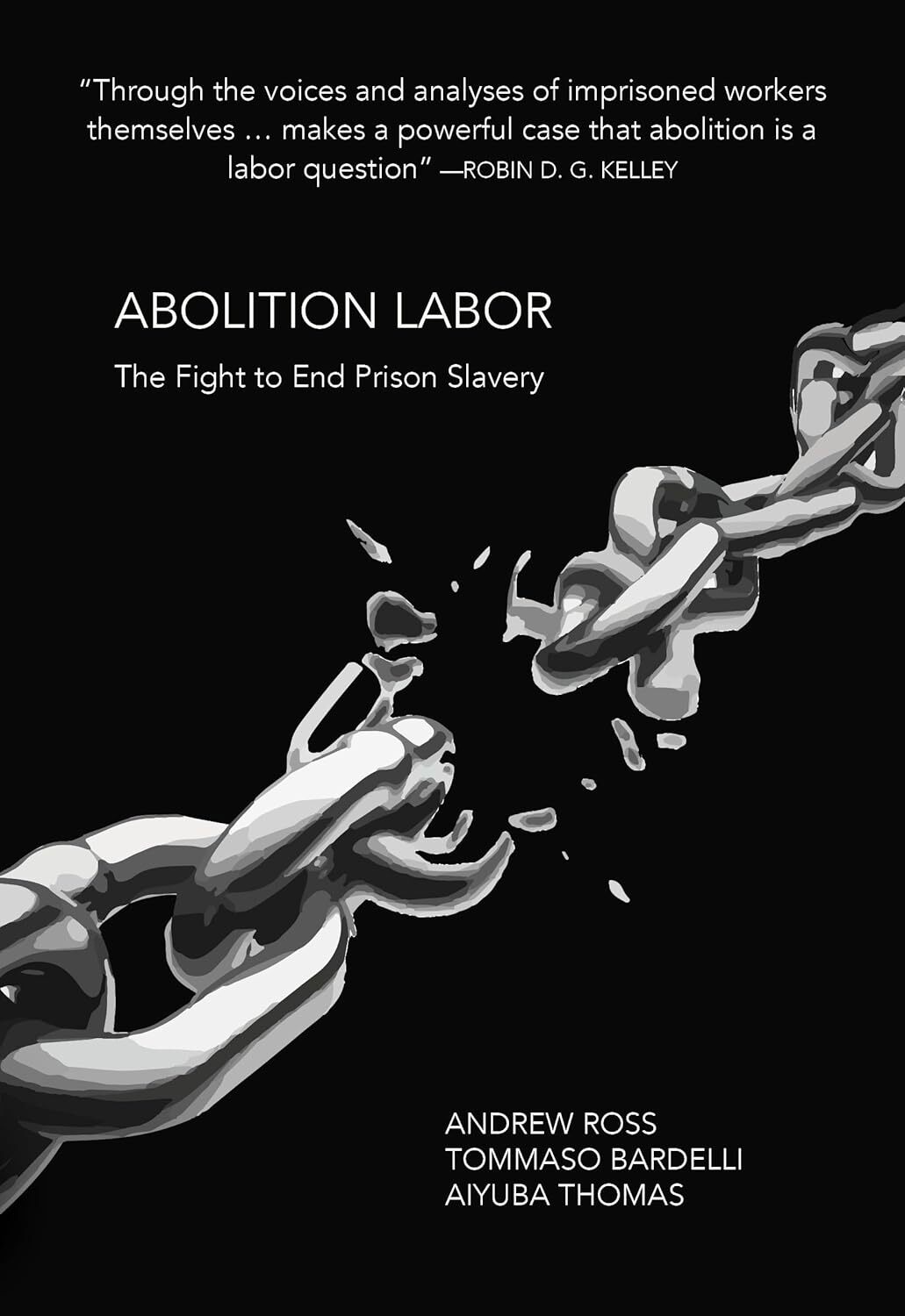In the last week of California’s 2024 legislative session, its lawmakers voted to place on the November ballot a constitutional amendment to get rid of the slavery exception enshrined in their state constitution. The measure will appear on California ballots as Proposition 6. A version of the slavery exception it seeks to ban appears in many state constitutions as well as the U.S. Constitution; it bans slavery except for those convicted of a crime. Owing to the size of California’s prison population, by sheer scale its measure is the most significant amendment bill to result from the efforts of the Abolish Slavery National Network (ASNN). So far, the group has jumpstarted amendment initiatives in as many as twenty states. A similar measure is on the ballot in Nevada. If California and Nevada voters decide to remove this stain from their respective states, they will join the seven others which have achieved this milestone in recent years.
What is the impact of these reforms, and how do they relate to the goals of prison abolition?
Writing about the failure of Reconstruction, W. E. B. Du Bois concluded that the abolition of chattel slavery was not enough. To create a positive vision of “abolition democracy”—one that fully implemented the new rights of the Fourteenth and Fifteenth Amendments—much more was needed to truly liberate formerly enslaved people from the political, economic, and social fetters that still kept them down.
The same could be said today about what we call abolition labor. Constitutional measures like those described above are necessary—though on their own insufficient—steps on the road to dismantling mass incarceration. In the following, we explore the history of efforts to ban the exception, and consider what it looks like to pursue that goal in a way that is sensitive to the ultimate goal of abolishing prisons.
Interestingly, California’s effort this year to ban the exception has an abolitionist precedent in the state’s own complicated history with slavery. In 1850 California joined the union as a “free state” that outlawed indentured servitude and slavery, except for those serving out a criminal punishment. The act of abolishing chattel slavery was foundational, but so was the exception regarding the use of forced prison labor, which later found its way into the Thirteenth Amendment of the United States. In 1879, however, the inclusion of a provision in California’s revised constitution banned the use of unpaid prison labor for private profit. Incarcerated people could no longer be let out by contract to persons or corporations. The products of free labor no longer had to compete on the open market with those manufactured by unpaid labor behind the prison walls.
California was the first to abolish this form of penal servitude, and over the next few decades, state after state followed suit, even in the South where contract labor would take the notorious form of “convict leasing.” Forced labor behind bars continued, however, so long as it was for the public benefit, as court after court deferred to the Thirteenth Amendment’s exception clause.
This status quo remains largely undisturbed: Despite the limited reintroduction of private contract labor in some states from the 1980s onward, the vast majority of forced prison labor today is enlisted in running state and federal penitentiaries, or in producing goods and services for purchase by government agencies. Incarcerated people currently receive ultra-low pay (and, in seven states, nothing at all) for jobs that are not protected by OSHA regulations. The imposition of this labor is a form of punishment that is typically not part of a sentence.
Unfortunately, in the seven states (so far) where slavery has been abolished without exception, little has changed on the cellblock; forced labor continues as before. Men and women still face punishment, including beatings, lockdowns, sexual assault, loss of family visitation rights, elimination of good time credit, and solitary confinement for refusing to work. For their part, courts have been slow to register the full consequences of the constitutional amendments. In Colorado, for instance, the first state to change its constitution to ban slavery without exceptions in 2018, the Court of Appeals rejected a case brought by A. Mark Lamar, an incarcerated man in Canon City, who had argued that the DOC labor requirement ran afoul of the new amendment. More recent lawsuits—claiming that the states’ prison labor discipline policies are in violation of the new amendments—have been filed in both Colorado and Alabama, but it is still unclear how they will fare in court. Above all, it has not been easy to change the mentality and daily policing of guards, accustomed to longstanding habits and resistant to interference from the outside.
Decarceral thinkers and doers
Every week, Inquest aims to bring you insights from people thinking through and working for a world without mass incarceration.
Sign up for our newsletter for the latest.
Newsletter
Litigation is underway in several of these states, including Colorado, Alabama, and Tennessee, to fully remove the threat of coercion from prison work assignments, and to establish the right to fair pay and labor protections. In New York, the 13th Forward coalition is lobbying for an additional bill, Fairness and Opportunity for Incarcerated Workers, that will establish a standard wage package, including a statewide monitoring board to ensure implementation.
Given how little changed following these constitutional amendments, some have questioned whether such constitutional reforms are merely symbolic—or, worse yet, detrimental to the cause of prison abolition, since they may create the impression that our inhumane carceral system is responsive to progressive reform. In Inquest, for instance, Stephen Wilson, Minali Aggarwal, Jacqueline Groccia, and Lydia Villaronga eloquently argued that legislative efforts focused on expanding labor rights inside prisons “don’t attend to the root cause of exploitation,” which is the prison system itself. Such measures, Wilson and his coauthors feel, will therefore always ultimately fall short of restoring dignity for incarcerated workers, and of addressing the violence that is woven into the very foundations of the system.
Our research on prison labor conditions offers a more measured assessment. First and foremost, we believe that the justice of abolishing slavery without exception should be entirely beyond debate; it is unquestionably the right thing to do. The notion that anti-slavery bills only amount to window dressing is unlikely to resonate with anyone who has experienced the degradation of a harsh punishment, such as a spell in solitary confinement, for refusing to take a work assignment. Involuntary servitude is a crime against humanity. It is not simply a form of labor exploitation; it is also an act of dehumanization that strips people of their dignity. Denying that respect for personal integrity is not only a violation of human rights, it is also at odds with any notion of penal rehabilitation. Restoring it is key to civilizing our society. States that have begun to do so are adding to the momentum to revise the federal Thirteenth Amendment (which contains the federal exception clause); this would bring the United States into alignment with international norms and laws that prohibit coerced labor.
The jailer’s threat of violence is omnipresent behind the walls, as we found in the interviews we conducted, and it is central to the exercise of disciplinary power. Any measure that establishes the right to refuse a work assignment that is poorly paid and unsafe is a direct challenge to this exercise of authority. Taking away the discretionary power of staff to discipline and punish around work assignments is no small thing in a system governed, at all times, by the threat of institutional violence. By contrast, meaningful work, when it is offered on a voluntary basis, can be self-affirming. Notably, none of the amendments withdraw the right to work, since most people behind bars want to be productive.
In principle, the amendments open the door toward the even more transformative impact of fair wage provision. Many of the formerly incarcerated people we interviewed for our new book, Abolition Labor: The Fight to End Prison Slavery, testified that their experience of a prison sentence would have been a lot different if they had been paid even a few dollars more than the 15 or 20 cents an hour they had received for working while incarcerated. Substandard mess hall food combined with the high markup on commissary goods required them to consume much more than their pay allowed, and so support from loved ones on the outside was indispensable to keeping them alive. Many of them spoke about the desire to provide debt relief to their households, and about how, if they had access to more than the meager gate money provided on discharge, they could have made a head start on getting their lives back together. So, too, they believed that the opportunity to contribute toward earning benefits such as Medicare, Social Security, and unemployment insurance would have led them to believe that a potentially stable future lay ahead.
That is why New York’s 13th Forward coalition, to which we belong, has pushed for a companion bill on wages and labor rights, alongside its version of a slavery abolition amendment act. The Fairness and Opportunity for Incarcerated Workers Act contains a raft of measures: minimum wage, workplace safety, the right to organize, the right to sue based on violations, the removal of Corcraft (the state’s prison industry company) as the preferred vendor for government agencies, and the establishment of a prison labor board to determine wage scales and to ensure that work assignments provide quality vocational and occupational training. There are also limitations placed on what the state can garnish from higher wages: child support is allowed, for example, but not court fines or a range of other fees and surcharges.
Earning a fair wage would also free incarcerated people from the need to participate in the informal economy, including the risky—and predatory—trade in contraband goods. In our interviews as members of the NYU Prison Education Program Research Lab, we gathered testimony about this underground economy, and so we were able to provide a more holistic picture of labor conditions behind the walls than has been provided by surveys of formal work assignments. Our most striking finding was related to the “hustles” that most incarcerated people need to supplement their ultra-low pay, which has been stagnant for decades while the price of goods has risen considerably. In New York, for instance, as the pandemic-era inflation peaked in the summer of 2022, commissary prices for staple foods and snacks increased by over 300 percent in some facilities. Yet incarcerated workers in the state were still making an average wage of 40 cent an hour, the same rate they had earned in 1993 (the last year New York Department of Corrections and Community Supervision raised wages for incarcerated workers). Without off-the-books transactions, those with little or no family support would not make it.
As a result, the prison economy closely resembles the “lousy wage and a hustle on the side” combo that holds sway in the free world. The informal or illegal activity that delivers so many into the jaws of incarceration continues on the inside and is picked up again after release—all because poor people cannot make ends meet with the low-paying jobs available to them.
One of the most influential theories on mass incarceration, promoted by Loïc Wacquant among others, holds that the explosive growth of U.S. prisons from the 1980s onward offered a way for the country to “warehouse” large fractions of the working class displaced by deindustrialization and abandoned during the austerity era of social welfare cuts. No longer of use to an economy in transition, they were instead forcibly employed to run the prisons that housed them, or as a cheap labor force to make formerly imported products. Inside, inactivity ruled despite their work responsibilities, and the incarcerated population was far removed from the restless rush of the outside world.
We formed a different picture from our research. Far from being a cordoned-off environment that functions as a human depository for the “surplus” working class, we found that today’s prison exists in a continuum with the outside, just as its techniques of discipline have become common outside its walls. A high level of creativity applies to almost every aspect of this underground economy, where participants are forced to barter all manner of goods and services to stay afloat. Moments that could be utilized for business opportunities or self-care (work on the body and mind) are seldom wasted, and so unoccupied time is scarce. “Idle time” is anything but, and almost everything has a price.
These enterprising activities are infinite in variety, ranging from small-scale interpersonal trades to large operations coordinated with street organizations on the outside. They often draw on homegrown skills in arts and crafts, such as making clothing and jewelry, cakes, sketches, birthday cards, hooch, tattoos, soap sculptures, and hair dye from everyday items found or procured in the prison environment. Others are custom services such as cleaning, meal preparation, sewing, personal laundry, hairstyling, letter writing, and sex. Many of these hustles are learned on the inside and are a byproduct of the internal marketplace. Others, involving high-cost contraband, require skills acquired before incarceration and often depend on a “dirty” correctional officer who is profiting royally by bringing in the goods. In Alabama’s chronically understaffed and overcrowded prisons, for example, we were told that many guards would not have signed up for such an unsafe job unless they could earn lucre from smuggling cell phones, weapons, and drugs that sell in prison for up to twenty times the retail price.
The financialization that impacts so much of our daily lives has also penetrated the prison. Nearly every scheme you can think of on the outside is happening inside, too, including day trading in stocks (using contraband cellphones) and ambitious gambling enterprises. Many incarcerated people run personal stores according to the “juggle” system, a high-interest credit system. These stores, stocked with commissary goods, function as an informal retail system inside the prison, where people can “borrow” food and other items at interest, often as high as 100 percent. Foodstuff pilfered from the mess hall can also be profitably sold or traded.
Transactional activities like these require ingenuity and careful attention, as distinct from the more routine labor of most formal work assignments. They are part of an informal economy that Business Insider glorified as a “hothouse of entrepreneurial finesse.” This may sound remarkably enterprising—and it is—but it is also important to observe that much of the trade is highly predatory and dangerous, governed by threats of violence that echo the official protocols of penal servitude rather than evade them. Many of these hustles are rooted in the dark arts of mistrust, manipulation, and plunder, and they often thrust incarcerated people into cutthroat competition with each other. Kinetik Justice, one of the leaders of Alabama’s prisoner rights movement, summed it up for us in this way:
You don’t have to be a criminal to be in an Alabama prison, but by the time you leave, you have been well groomed in criminality, because the only way to avoid being the prey is to learn the ropes and prey on others through the black market. So, when you steal sugar or chicken from the kitchen, you are stealing from the general population. When you steal the sugar, who loses the cake? It’s not the warden’s cake. It’s not police cake. It’s our cake. You are stealing from us to sell it back to us. When you are forced to steal from your own brother and sell it to them to survive, that’s not a legitimate hustle, it’s a system that is designed to keep us in competition with each other and make us resort to the darkest behavior. And free labor is at the root.
Kinetik is right. But we would extend his insights to the free world, where analogous antisocial vices and occult economies thrive as direct offshoots of the low-wage economy. Lifting the wage floor is not the only solution, but it is a necessary part of the fight against poverty—the number one factor driving incarceration. Paying fair wages means people don’t have to resort to stealing and hustling, and so it would be a colossal boost to public safety, on both sides of the wall.
As for the long-term abolitionist goal of decarceration, we believe that carceral officials would almost certainly be pressured to shrink their prison populations if faced with considerably higher wage bills. The greatly increased cost of keeping open facilities in which imprisoned men and women do all the work of maintenance—cooking, cleaning, repairing, and laundry, among other housekeeping tasks—would make it difficult, politically and economically, to sustain mass incarceration’s vast archipelago.
Of course, ending the exception in the Thirteenth Amendment and paying fair wages are not the only routes to decarceration. There are many other ways for abolitionists to do that work. But prison slavery abolition is a necessary step on the pathway to justice, even though the road beyond, as Du Bois reminded us, still needs to be built.
Image: Anne Nygard/Unsplash




